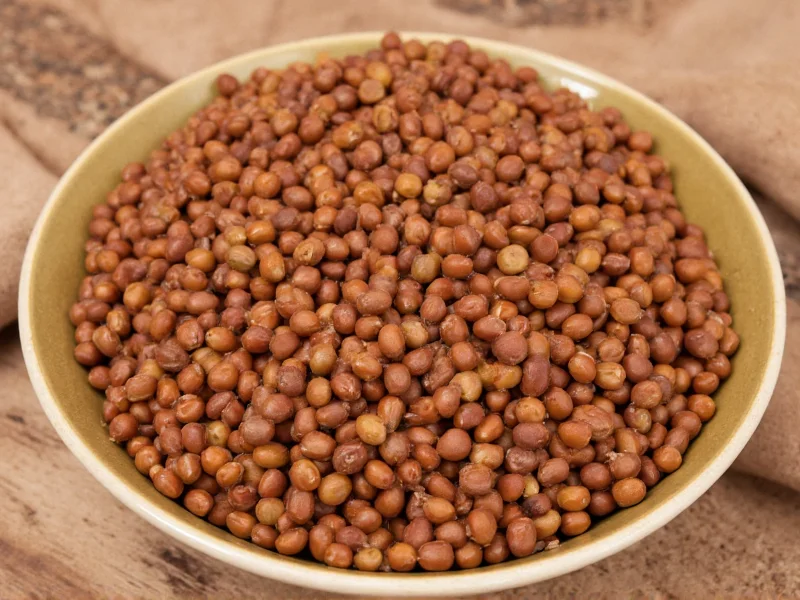Understanding Legume Varieties: Lentils and Beans Explained
When exploring plant-based protein sources, understanding the distinction between lentils and beans proves valuable for both nutrition and cooking. These legume varieties share similarities as members of the Fabaceae family but possess unique characteristics that affect preparation, nutritional content, and culinary applications.
Botanical Classification and Physical Characteristics
Lentils belong to the Lens culinaris species and feature a distinctive lens shape, hence their name. They come in various colors including green, brown, red, and black, with sizes typically ranging from 2-9mm in diameter. Beans encompass numerous species within the Phaseolus genus, including kidney beans, black beans, and pinto beans, generally larger (8-15mm) with oval or kidney shapes.
The structural differences significantly impact cooking properties. Lentils have thinner seed coats, allowing them to cook in 15-30 minutes without pre-soaking. Beans' thicker coats necessitate 8-12 hours of soaking and longer cooking times (45-90 minutes), though modern pressure cooking methods have reduced this requirement.
Nutritional Comparison of Lentils and Beans
Both legumes deliver impressive nutritional profiles, but key differences exist that may influence dietary choices. The following table compares standard 100g cooked portions:
| Nutrient | Green Lentils | Black Beans | Chickpeas |
|---|---|---|---|
| Calories | 116 | 132 | 164 |
| Protein (g) | 9.0 | 8.9 | 8.9 |
| Fiber (g) | 7.9 | 8.7 | 7.6 |
| Iron (mg) | 3.3 | 2.1 | 2.9 |
| Folate (mcg) | 181 | 128 | 172 |
| Potassium (mg) | 369 | 355 | 291 |
Lentils generally contain slightly higher folate and iron content, making them particularly beneficial for pregnant women and those with iron-deficiency concerns. Beans often provide marginally more fiber and complex carbohydrates. Both legumes offer complete amino acid profiles when combined with grains, creating nutritionally balanced meals for vegetarian and vegan diets.
Culinary Properties and Cooking Applications
The cooking behavior of lentils versus beans significantly influences their culinary uses. Lentils' quick cooking time and tendency to break down make them ideal for soups, stews, and purees. Red lentils practically dissolve during cooking, creating creamy textures perfect for dals and curries. French green lentils maintain their shape better, working well in salads and side dishes.
Beans retain their structure more consistently throughout cooking, making them suitable for dishes where distinct bean shapes matter, such as three-bean salads, chili, and baked bean preparations. Their denser texture holds up better in long-simmered dishes. Understanding these properties helps home cooks select the appropriate legume for specific recipes.
Health Benefits and Dietary Considerations
Regular consumption of both lentils and beans correlates with numerous health benefits supported by nutritional research. Their high fiber content promotes digestive health and helps regulate blood sugar levels, making them valuable for diabetes management. The soluble fiber in these legumes also contributes to cardiovascular health by helping reduce LDL cholesterol levels.
For individuals concerned about digestive discomfort from legumes, proper preparation techniques can minimize issues. Rinsing canned beans thoroughly removes excess sodium and some oligosaccharides that cause gas. For dried varieties, changing the soaking water once or twice before cooking reduces compounds that may cause digestive upset. Sprouting lentils and beans also increases nutrient bioavailability while reducing anti-nutrients.
Storage and Shelf Life Guidelines
Proper storage maximizes the shelf life and nutritional value of both lentils and beans. Dried lentils maintain quality for 1-2 years when stored in airtight containers in cool, dark places. Beans typically last slightly longer—up to 2-3 years under similar conditions. Freezing extends shelf life further, particularly for cooked legumes.
Canned varieties offer convenience with a shelf life of 2-5 years, though quality gradually declines over time. Once opened, transfer contents to glass containers and refrigerate for up to 5 days or freeze for longer storage. Pay attention to expiration dates and discard any legumes showing signs of mold, off odors, or unusual discoloration.
Substitution Guide for Cooking
Understanding when you can substitute lentils for beans (and vice versa) expands culinary flexibility. While not always perfect replacements due to texture differences, certain substitutions work well:
- Red lentils can replace mashed beans in veggie burgers or dips
- French green lentils substitute well for black beans in cold salads
- Black beans work as lentil replacements in hearty stews
- Chickpeas provide similar texture to larger lentil varieties in grain bowls
When substituting, adjust cooking times accordingly and consider the final dish's desired texture. For recipes specifically requiring lentils' quick-cooking properties (like weeknight soups), beans may require pre-cooking to achieve similar results.
Environmental Impact and Sustainability
Both lentils and beans contribute positively to sustainable agriculture through nitrogen fixation, reducing the need for synthetic fertilizers. Lentils generally require less water than many bean varieties, making them particularly valuable in water-scarce regions. Their ability to grow in marginal soils where other crops struggle enhances food security.
As part of crop rotation systems, these legumes improve soil health for subsequent crops. Choosing locally grown varieties further reduces environmental impact by minimizing transportation emissions. Dried forms generally have a smaller carbon footprint than canned options due to reduced processing and packaging requirements.











 浙公网安备
33010002000092号
浙公网安备
33010002000092号 浙B2-20120091-4
浙B2-20120091-4